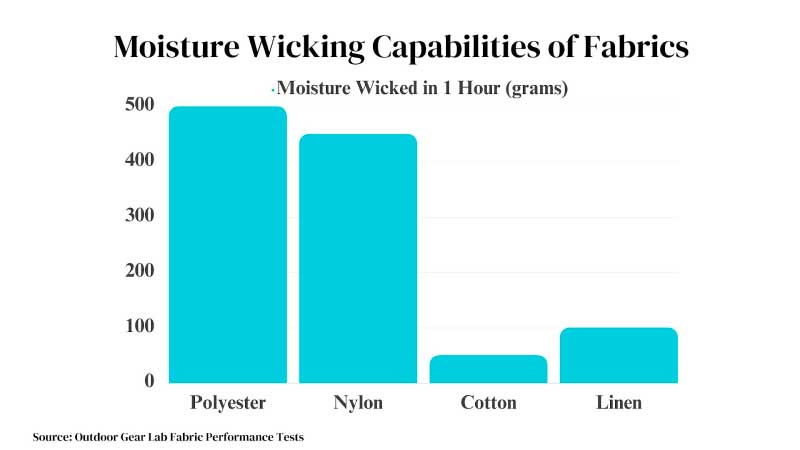
Fishing in tropical climates poses unique challenges for anglers. The combination of intense sun, heat, and humidity makes selecting the right clothing imperative.
Proper attire can make the difference between an enjoyable and miserable saltwater fishing trip. This article will explore how to choose lighter, breathable clothing styles tailored for fishing in tropical destinations.
The Direct Impact of Clothing on Fishing Experiences
The climate of tropical regions is usually hot and humid year-round. Sudden bouts of rain are also common. Such conditions make wearing heavier, non-breathable fabrics extremely uncomfortable.
The wrong clothes can cause overheating, chafing, sunburn, and other problems that ruin fishing trips.
Appropriate lightweight, breathable attire provides cooling airflow to the skin, wicks moisture, dries quickly and protects against the sun’s rays. The right clothes allow anglers to focus on fishing rather than discomfort.
Key Terminology for Fabrics
When selecting clothing for tropical fishing, look for key terms that indicate breathability and lightweight properties:
- Breathable – Allows efficient ventilation and cooling.
- Moisture-Wicking – Draws sweat away from the skin to the fabric exterior.
- UPF Rating – Ultraviolet protection factor; the higher the rating, the better the UV blocking.
- Quick-Dry – Fabrics that dry swiftly after getting wet.
- Lightweight – Weighs less and provides less insulation.
Synthetic vs. Natural Fabrics
Two main fabric types to consider are synthetics and natural fibers:
| Fabric Type | Examples | Advantages | Disadvantages |
| Synthetic | Polyester, nylon, acrylic | Durable, wrinkle-resistant, quick-drying, moisture-wicking | Can feel stiff, heat retention, static |
| Natural | Cotton, wool, silk | Breathable, soft, absorbent | Wrinkle easily, slower to dry, shrinkage |
Synthetic fabrics like polyester and nylon excel at wicking moisture, drying quickly, and offering sun protection. Natural fibers like cotton provide comfort but absorb moisture and dry slowly. Blends combine the advantages of each type.
Essential Factors for Breathable, Lightweight Fabrics
Weave
The weave of a fabric impacts its weight and breathability. Tightly woven fabrics are more durable but less air-permeable. Loosely woven fabrics are cooler against the skin but less sturdy. The ideal weave provides a balance of breathability and durability.
Weight
Lightweight fabrics weigh between 3-6 ounces per square yard. They have an open weave that enables air circulation. Heavier fabrics retain more heat and moisture – undesirable in the tropics.

The bar chart comparing the moisture-wicking capabilities in grams per hour of different fabric types clearly shows the superior performance of synthetic fabrics polyester and nylon compared to natural fibers cotton and linen.
Polyester wicked 500g of moisture in an hour, 10 times more than cotton at 50g. Nylon also wicked 450g, significantly more than linen’s 100g. This demonstrates the benefits of synthetics for moisture management in activewear and outdoor gear.
Material
Synthetic materials like polyester and nylon are lightweight, dry quickly, and protect against UV rays. Natural fibers like cotton and linen are more breathable but absorb and retain moisture. Blending the two provides the best combination.
Choosing the Right Fishing Shirt
Fishing shirts are designed specifically for anglers. Key features include:
- Tight woven fabric with UPF 50+ sun protection
- Mesh vents under arms, along sides, and across the back for ventilation
- Moisture-wicking and quick-drying material
- Flap or roll-up collar to protect the neck
The higher cost provides added functionality and comfort that make them a sound investment for tropical fishing.
Shorts vs. Convertible Pants
Shorts
Breathable nylon or polyester blends that dry swiftly are ideal for shorts. Light coloring reflects heat. Side pockets and belt loops add functionality. Shorts provide air circulation to most of the legs.
Convertible Pants
These pants convert to shorts by removing the leg portion via zippers. They provide versatility to adjust coverage as needed.
The pants protect from brush and insects while converting to shorts enables cooling during the hottest periods. Convertible pants in lightweight, synthetic blends are ideal for tropical fishing.
Quality Footwear Prevents Slips and Falls
Fishing often involves slippery, wet surfaces on docks, boats, and shorelines. Proper footwear with grip, support, and quick drying abilities prevents falls. Key features:
- Grippy Rubber Outsoles – Prevent slips on wet surfaces
- Ankle Support – Provides stability for unstable terrain
- Quick-Drying Material – Swiftly evaporates water after getting wet
- Lightweight – Reduces fatigue from all-day wear
Quality fishing footwear may cost more but repays that investment through enhanced safety and comfort during fishing.
Accessories for Enhanced Protection
While clothing covers the core, accessories shield outlying areas:
Hats
A wide-brim hat provides 360° sun protection for the head, face, ears, and neck. Opt for lightweight, breathable straw or polyester.
Sunglasses
Polarized lenses reduce eye strain and glare. Look for UVA/UVB blocking and a tie strap to prevent losing them in the water.
Sun-Protective Gloves
Fingerless gloves allow functionality while shielding from sun exposure that causes aging and skin cancer on the hands. Light, moisture-wicking fabrics are ideal.
Face Masks
Protect the nose and cheeks from sunburn. Look for lightweight, UPF-rated masks that don’t retain moisture.
Real-World Perspectives
Professional anglers and experts validate the importance of proper attire when fishing in tropical climates:
- “The intense sun is no joke. A good lightweight fishing shirt, hat, sunglasses, and sun gloves are essential for me to spend 8-10 hours on the water in the Caribbean heat.” – John S., sportfishing guide.
- “Breathable, moisture-wicking fabrics made a huge difference in my comfort level fishing in the tropics. They keep you cool and dry as temperatures climb over 100°F every day.” – John T., fishing school owner.
- “Fabrics today blend the quick-dry performance of synthetics with the soft comfort of natural fibers. This combination works great for fishing in humid climates.” – Sarah R., fabric technologist.
- “UPF-rated shirts, hats, buffs, and gloves should be worn together to protect all exposed skin. You’ll avoid and prevent sun damage.” – Dr. J. Harper, dermatologist.
Sustainable and Ethical Fishing Attire
Environmental and social responsibility should factor into clothing purchases:
- Choose brands that use recycled fabrics and sustainable manufacturing practices.
- Support companies that ethically source materials and pay fair labor wages.
- Avoid plastics that pollute waterways where you fish.
Protect yourself, others, and the planet by buying eco-conscious and ethically made apparel.
Caring for Fishing Clothes
To prolong high-performance fishing gear:
- Rinse clothing in fresh water after saltwater use to prevent deterioration.
- Wash in gentle, eco-friendly detergent; avoid fabric softeners.
- Air or line dries away from direct sunlight.
- Check for holes and damage after each use; repair promptly.
With proper care, high-quality fishing apparel can deliver comfort and protection trip after trip.
Key Takeaway
The right lightweight, breathable fishing clothes can make or break the experience when fishing in tropical climates. Seek fabrics with moisture-wicking, quick-drying, and UV-blocking features. Prioritize shirts, pants, footwear, and accessories made specifically for fishing.
While costlier, high-performance gear designed for anglers pays off through enhanced comfort and convenience while fishing in the tropics.
Lastly, care for your apparel to safeguard your investment and the environment. With informed selections tailored for tropical conditions, you can focus fully on catching fish!




